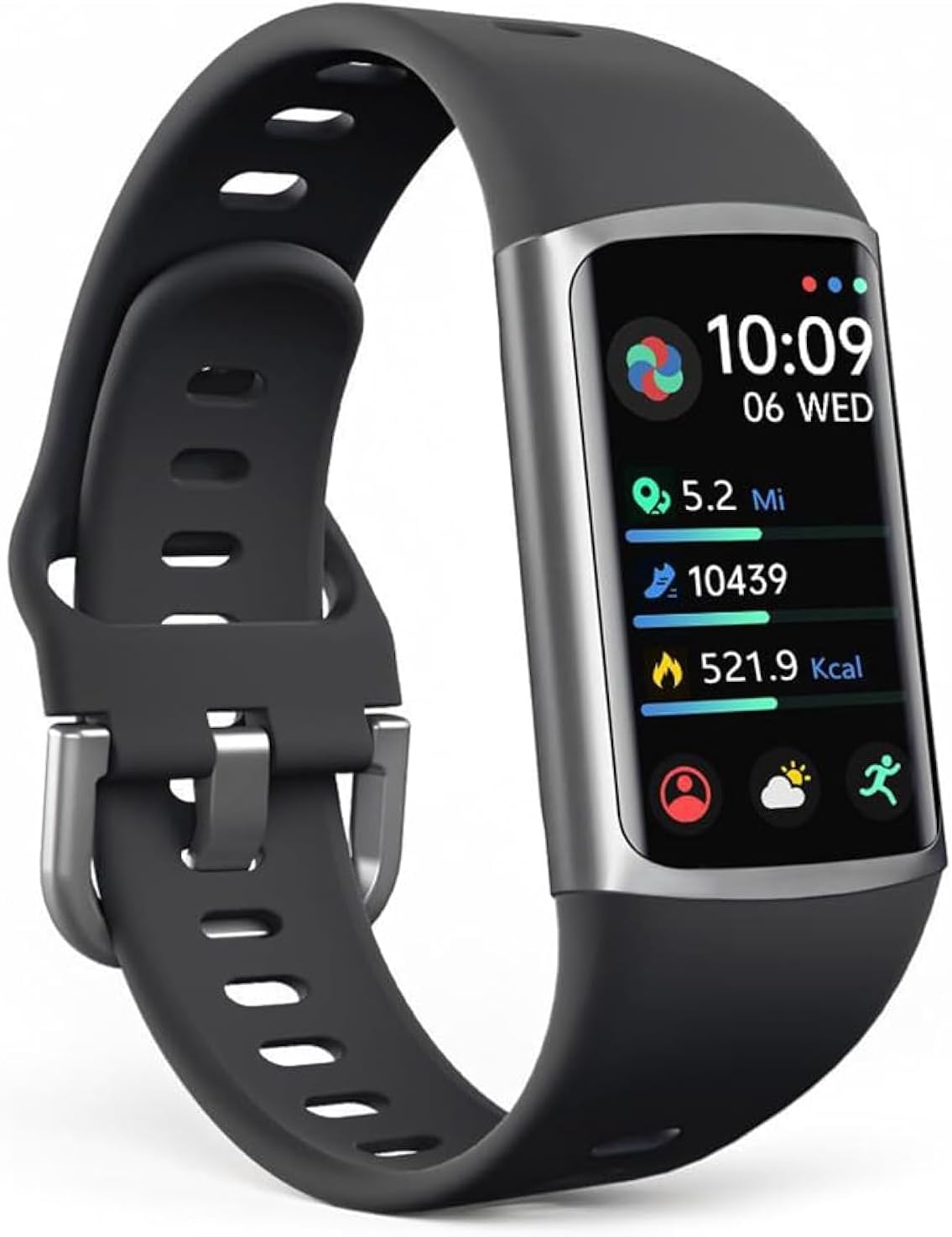
Nowadays, sports trackers have become very common wearable devices in our daily lives. They can collect our daily exercise data and sleep status, and then help us cultivate a healthier lifestyle habit.
Most exercise trackers come with built-in accelerometers and gyroscopes, as well as the ability to calculate calorie burning and track sleep. In addition to these basic functions, it can even measure the height of climbing stairs, daily food intake, and so on. Some even have built-in GPS positioning function, which can more accurately track exercise data.
How Fitness Tracker Work?
A fitness tracker operates through a set of integrated mechanisms. It primarily relies on various sensors to gather data. For instance, an accelerometer is commonly used to sense the acceleration and deceleration of the body. As the user moves, whether it’s walking, running, or engaging in other physical activities, the accelerometer detects the slightest changes in motion and translates them into data related to steps taken, speed, and the intensity of movement. This data serves as the foundation for calculating the distance covered and estimating the calories burned.
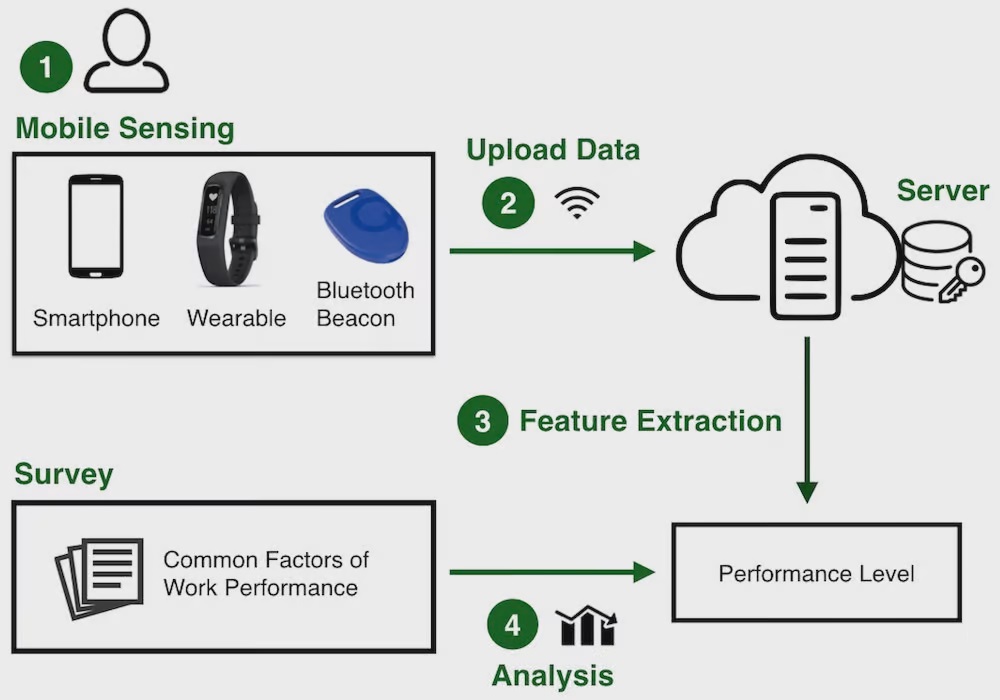
Another crucial sensor is the heart rate sensor. Typically, it functions by emitting light and measuring the light’s reflection or absorption. When the heart pumps blood, the blood volume and flow rate change, which in turn alters the light interaction. The sensor analyzes these changes to accurately determine the heart rate. This information is vital for monitoring the user’s cardiovascular response during exercise and providing insights into overall health and fitness levels.
In addition, some fitness trackers incorporate a gyroscope. The gyroscope helps in detecting the orientation and rotation of the device. It is especially useful in activities where the body’s position and movement in different planes are involved, such as cycling or certain sports training. It provides additional data about the body’s angular movements and postures, enhancing the accuracy of activity recognition and analysis.

All the data collected by these sensors is then transmitted to a processing unit within the tracker. The processing unit, often a microcontroller or a dedicated chip, uses pre-programmed algorithms to analyze and make sense of the data. It cleans up any noise or errors in the raw data and calculates meaningful metrics. For example, it can determine the type of activity based on the patterns of acceleration and gyroscopic data. The processed data is then either presented on the tracker’s display, showing details like steps, heart rate, and activity duration, or it can be synced with a smartphone or computer application via Bluetooth or other wireless technologies. This allows users to access and review their fitness data in a more comprehensive and convenient way, and also enables the tracker to offer personalized suggestions and trends based on the long-term analysis of the data.
What Fitness Tracker Can do?
A fitness tracker has several main functions. In terms of exercise monitoring, it has a step-counting function that accurately records the number of steps a user takes while walking or running. Some can even distinguish steps in different exercise states. The calculation of exercise distance is achieved by combining the number of steps with the user’s stride length and other information, allowing the user to clearly know the length of their exercise path. For calorie consumption statistics, it estimates based on exercise type, duration, intensity, and the user’s personal physical data, which helps the user understand the energy consumption during exercise. Moreover, the exercise mode recognition function is powerful. It can automatically recognize various exercise modes such as running, cycling, swimming, mountain climbing, etc., and provide specific data monitoring and analysis for different modes, giving more accurate exercise feedback to the user.
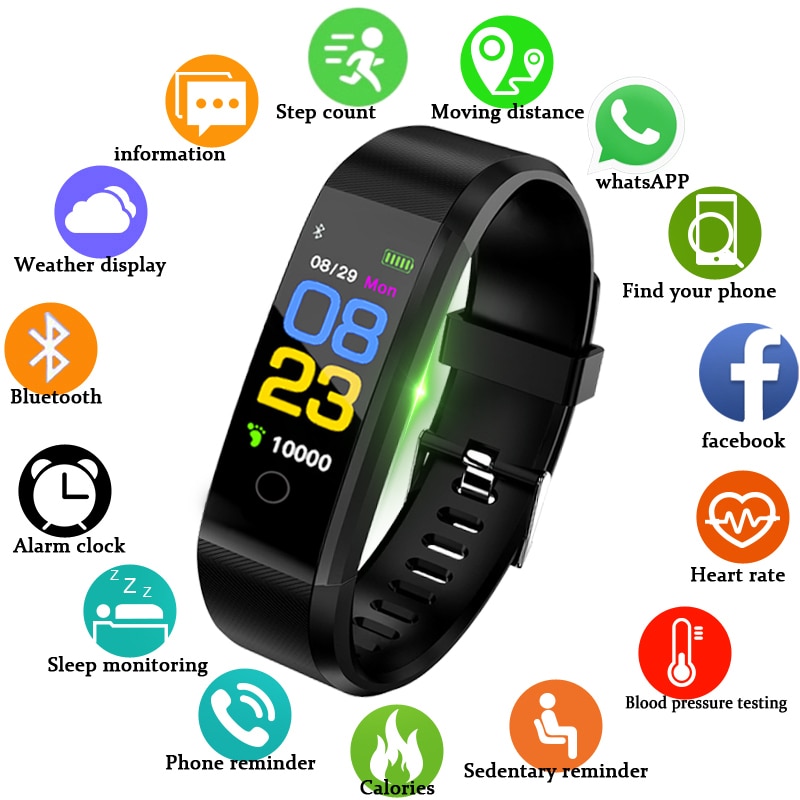
In the area of health monitoring, heart rate monitoring is a crucial part. It can track heart rate changes in real-time, enabling the user to know the heart rate range during exercise. This is of great significance for reasonably controlling exercise intensity and avoiding injuries caused by excessive exercise. It can also monitor resting heart rate and other indicators during daily wear to reflect the basic health status of the body. Sleep monitoring can record sleep duration and quality information and analyze sleep stages such as light sleep, deep sleep, and rapid eye movement (REM) sleep. This helps the user understand their sleep habits and detect potential sleep problems in a timely manner. Some fitness trackers also have a blood pressure measurement function, which is convenient for users to know their blood pressure at any time. For patients with high blood pressure or those concerned about cardiovascular health, these data are of high reference value. Additionally, the blood oxygen detection can monitor the oxygen content in the blood and reflect the oxygenation state of the body. For users during exercise, in high-altitude environments, or those with problems in the respiratory or cardiovascular systems, the monitoring of blood oxygen data is very important.
Data recording and analysis is also a core function of the fitness tracker. It can store a large amount of historical data for a long time, such as exercise and health data of the past few days, weeks, or even months, facilitating the user to review the changing trends of their exercise and health conditions. And through the built-in algorithm, it analyzes the recorded data and provides personalized exercise and health suggestions. For example, it can formulate a reasonable exercise plan based on exercise data or give effective suggestions for improving sleep according to sleep data.

The fitness tracker has other practical functions. After connecting with a mobile phone, it can receive notification reminders such as incoming calls, text messages, and social media messages, ensuring that the user will not miss important information when exercising or when it is inconvenient to check the phone. It also has a remote camera control function, which is convenient for the user to control the mobile phone to take pictures during exercise or in other scenarios and record wonderful moments. And when the mobile phone is lost, it can send a signal through the fitness tracker to help the user find the phone quickly.
Benefits of Fitness Trackers
It serves as a powerful motivational tool for exercise. By providing real – time and detailed data about physical activities, such as the number of steps taken, the distance covered, and the calories burned, users can have a clear visual representation of their efforts. For example, when users see that they have walked more steps than the previous day or have achieved a new personal record in terms of distance, it gives them a sense of accomplishment and encourages them to continue and even surpass their previous performance. This positive feedback loop helps to establish and maintain a regular exercise routine.
A fitness tracker plays a crucial role in health management. It continuously monitors vital health parameters such as heart rate, blood pressure, and sleep quality. With heart rate monitoring, users can adjust their exercise intensity to stay within a healthy range and avoid over – exertion. The sleep tracking function provides insights into sleep patterns, allowing users to identify problems like insomnia or restless sleep. By having this comprehensive health data at their fingertips, users can take proactive steps to improve their overall well – being and address potential health concerns before they become more serious.
It offers personalized exercise guidance. Based on the individual’s physical characteristics and exercise history stored in the tracker, it can generate customized exercise plans. For instance, if a user aims to lose weight, the fitness tracker can calculate the appropriate amount of exercise and calorie intake based on their basal metabolic rate and current fitness level. It can also provide real – time suggestions during exercise, such as whether to speed up or slow down to reach a specific fitness goal. This personalized approach maximizes the effectiveness of exercise and reduces the risk of injury caused by inappropriate exercise methods.
A fitness tracker brings additional convenience to daily life. It can be connected to a smartphone to receive various notifications, including incoming calls, text messages, and social media alerts. This means that users don’t have to constantly check their phones during exercise or other activities. Moreover, some fitness trackers have features like remote camera control, which allows users to capture photos with their phones without having to handle the device directly. These extra functions make the fitness tracker not only a fitness – related device but also a practical accessory in daily life.
Should You Buy A Fitness Tracker?
What Brand Of Fitness Tracker Is Good?
1.Fitbit Charge 6
The Fitbit Charge 6 is a comprehensive fitness tracker designed to cater to health-conscious individuals and casual exercisers. Its standout features include accurate heart rate monitoring, ECG functionality, and stress tracking through an electrodermal activity sensor. These features provide insights into cardiovascular health and stress levels, although manual input is required for some assessments. The device also measures blood oxygen levels (SpO2) and skin temperature, enhancing its health-monitoring capabilities.
Fitness tracking is another strength of the Charge 6, with 41 exercise modes ranging from walking to specialized activities like golf. It includes automatic activity detection via SmartTrack, though its responsiveness is not as fast or precise as competitors like Garmin. The built-in GPS enables route tracking without a phone, though its accuracy can be inconsistent, depending on how the band is worn.
Smart features elevate the Charge 6 beyond basic tracking. It integrates Google Wallet for contactless payments and Google Maps for turn-by-turn navigation, offering convenience for daily activities. Additionally, users can control YouTube Music from the device and connect it to compatible gym equipment like NordicTrack machines. The bright AMOLED touchscreen with an optional always-on mode and a physical button make it user-friendly.
Design-wise, the Charge 6 is sleek and comfortable, with a week-long battery life even under active use. However, some users have noted occasional connectivity issues, particularly with syncing to the Fitbit app and using Bluetooth. Furthermore, advanced features such as detailed health metrics are locked behind a Fitbit Premium subscription, which may limit its appeal to budget-conscious users.
The Fitbit Charge 6 is a versatile and feature-rich tracker, suitable for users who prioritize health insights and convenience. However, those requiring high-precision metrics for rigorous training may find more value in alternatives like Garmin or Apple Watch models.
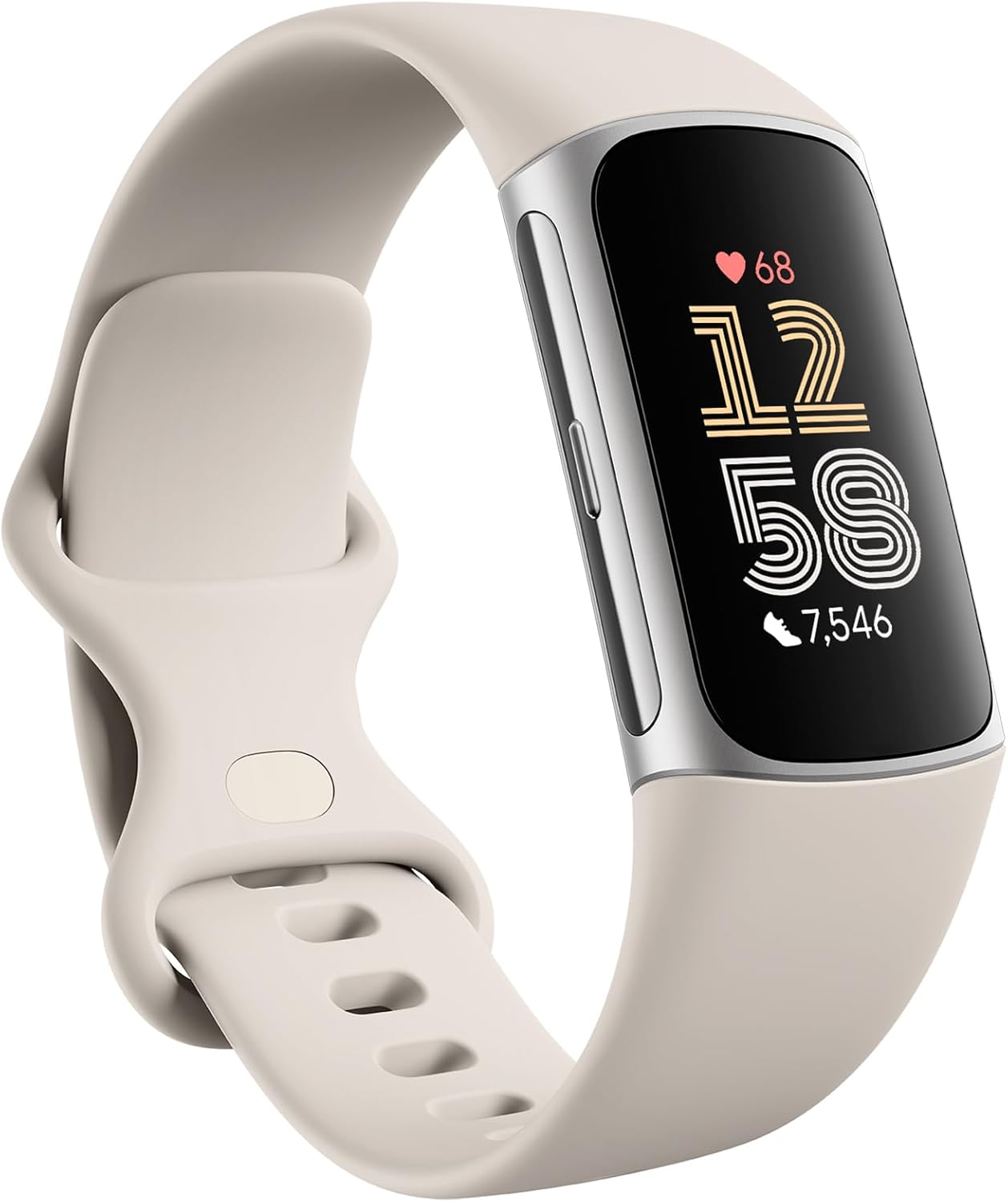
Fitbit Charge 6 Fitness Tracker with Heart Rate, GPS, Premium Membership, Health Tools – Porcelain/Silver
2.Garmin Forerunner 165
The Garmin Forerunner 165 is a versatile and well-rounded fitness watch, designed to cater to runners and multi-sport enthusiasts. It features a bright 1.2-inch AMOLED touchscreen, which provides excellent readability for metrics like pace, heart rate, and notifications, even under direct sunlight. This is a significant upgrade from older Forerunner models with dimmer memory-in-pixel (MIP) displays. The watch also includes advanced sensors such as pulse oximetry for blood oxygen levels, a barometric altimeter for elevation tracking, and a compass for improved navigation during activities like hiking or trail running.
The Forerunner 165 excels in activity tracking, offering modes for running, cycling, swimming, and even niche sports like pickleball and padel. Its all-systems GNSS mode enhances GPS accuracy by utilizing multiple satellite systems, ensuring reliable data in most environments. Health metrics such as heart rate variability (HRV), Body Battery (which tracks daily energy levels), and sleep analysis provide insights into your overall well-being. The Morning Report feature delivers a concise overview of your sleep, recovery, and weather forecast to help you start your day prepared.
Battery life is robust, lasting up to 11 days in smartwatch mode and 19 hours in GPS tracking mode. However, using features like always-on display can reduce the battery to about four days. For music lovers, the Forerunner 165 is available in a Music version, which supports offline music playback, though its setup process may require patience.
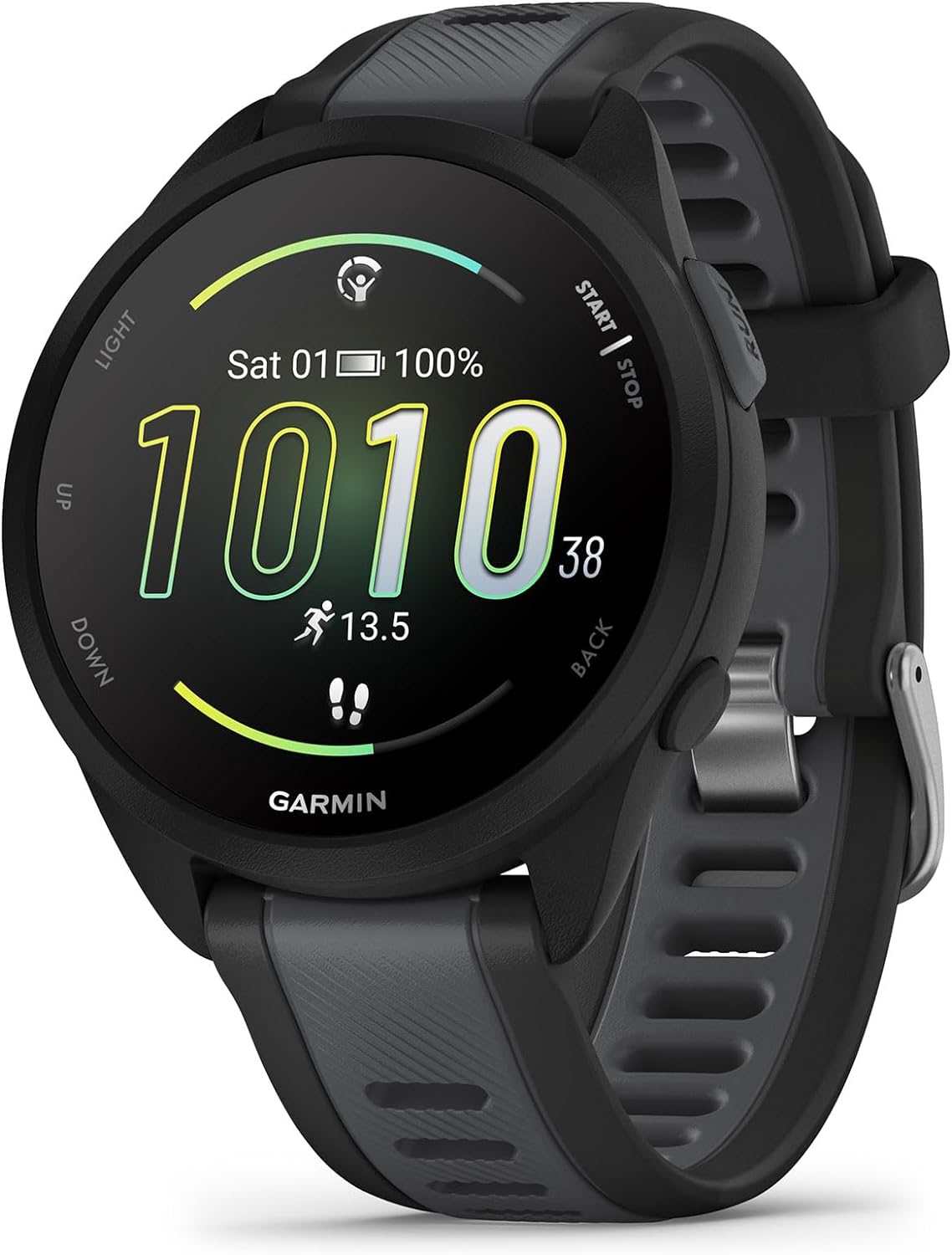
Garmin Forerunner 165, Running Smartwatch, Colorful AMOLED Display, Training Metrics and Recovery Insights, Black
3.Xiaomi Smart Band 9
The Xiaomi Smart Band 9 is an affordable and feature-rich fitness tracker that balances functionality and cost. It boasts a sleek design with a bright, 1.62-inch AMOLED display that is durable and easy to read even in direct sunlight. The device is lightweight and comfortable, with multiple strap options available, including standard silicone and magnetic loop bands. Its minimalist, button-free interface relies entirely on touchscreen navigation, which might take some getting used to but works smoothly.
For fitness and health tracking, the Smart Band 9 supports over 150 activity modes, including running, cycling, and yoga. It offers basic health metrics such as heart rate, blood oxygen levels, and sleep stages, although the accuracy of some features, such as heart rate monitoring during high-intensity workouts, could be improved. Sleep tracking includes detailed insights into sleep stages but occasionally records inaccuracies, such as mistaking awake time for sleep. Additionally, it provides a weekly “Vitality score” to encourage consistent activity.
One of its standout features is its long-lasting battery, with up to 21 days of life under moderate use, though this decreases with features like the always-on display enabled. However, the device lacks built-in GPS, relying on connected GPS from your smartphone, which might limit its appeal for outdoor sports enthusiasts who prefer phone-free tracking.
The companion Mi Fitness app provides detailed analytics and additional functionality, although users have reported occasional connectivity issues during setup or syncing. Despite some limitations, the Xiaomi Smart Band 9 delivers exceptional value for its price, making it an excellent choice for budget-conscious users seeking a capable fitness tracker for everyday use.
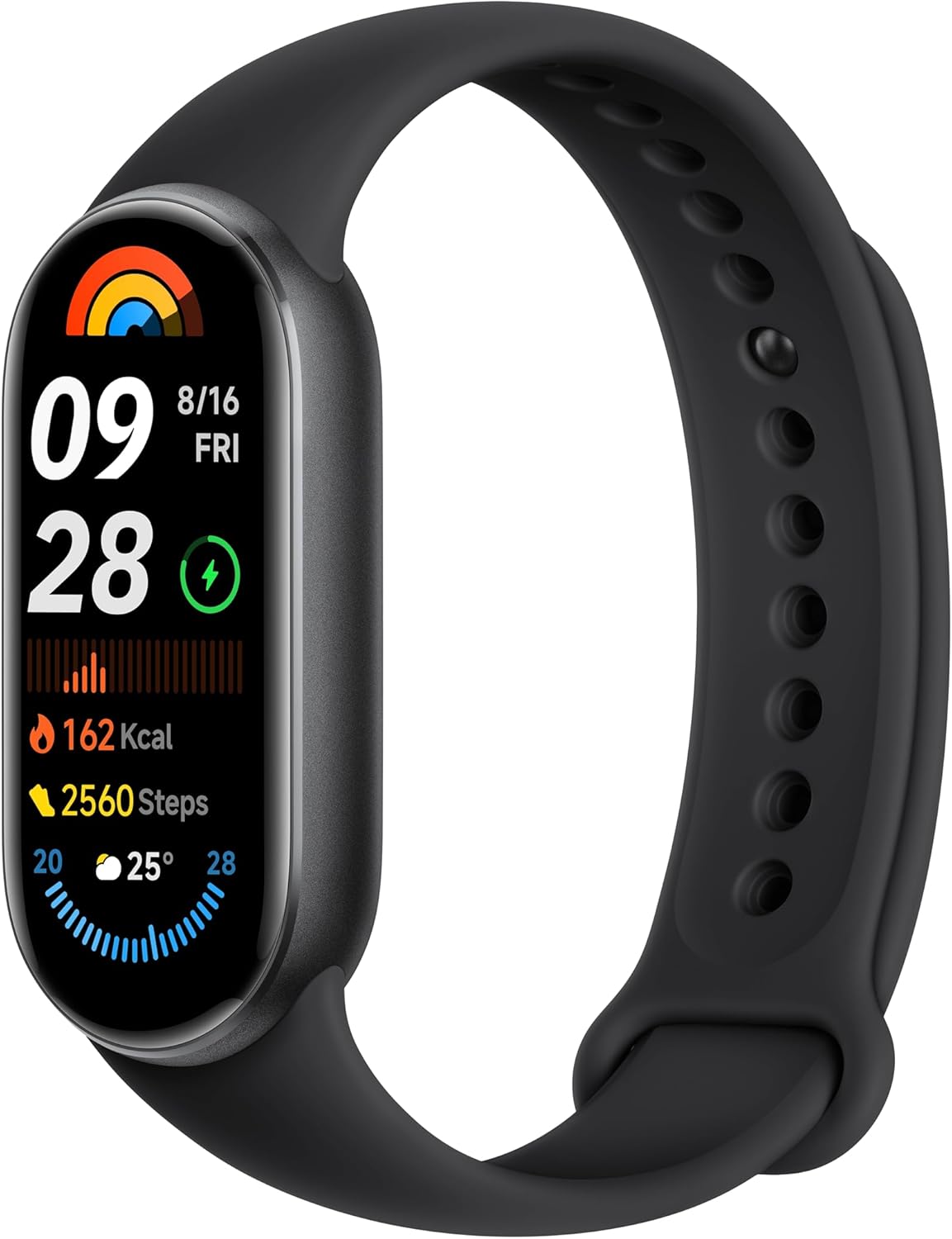
Xiaomi Smart Band 9 Global Version (2024) 1.62″ Amoled Display | 233 mAh Battery | up to 21 Days of Battery Life
4.Fitbit Inspire 3
The Fitbit Inspire 3 is an excellent entry-level fitness tracker that offers a compelling mix of features and affordability. Its slim, lightweight design is comfortable for all-day wear and suitable for activities like swimming and running. A key upgrade from its predecessor is the vibrant color AMOLED display, which is clear and responsive, with an optional always-on feature for convenience. Despite its small size, the Inspire 3 efficiently displays key information, though more detailed insights are better explored through the Fitbit app on your smartphone.
Health and fitness tracking are at the forefront of the Inspire 3’s capabilities. It monitors heart rate 24/7, tracks sleep stages, and now includes an SpO2 sensor to measure blood oxygen levels. Sleep tracking provides insights into sleep quality, breaking down light, deep, and REM stages, while stress management tools offer guided breathing sessions and a daily stress score. Fitbit’s irregular heart rhythm notifications add an extra layer of health monitoring, although advanced insights often require a Fitbit Premium subscription.
Fitness tracking supports various activities, such as walking, cycling, and swimming, and can automatically detect some exercises. The device logs data like heart rate zones, calories burned, and duration, helping users monitor their fitness progress. Battery life is robust, lasting up to 10 days on a single charge, although intensive use of features like the always-on display may reduce this slightly.
While the Fitbit Inspire 3 lacks built-in GPS, it pairs with your smartphone for connected GPS functionality. Its affordability and simplicity make it particularly appealing to beginners and those seeking a reliable, easy-to-use fitness tracker without the complexity of higher-end devices.
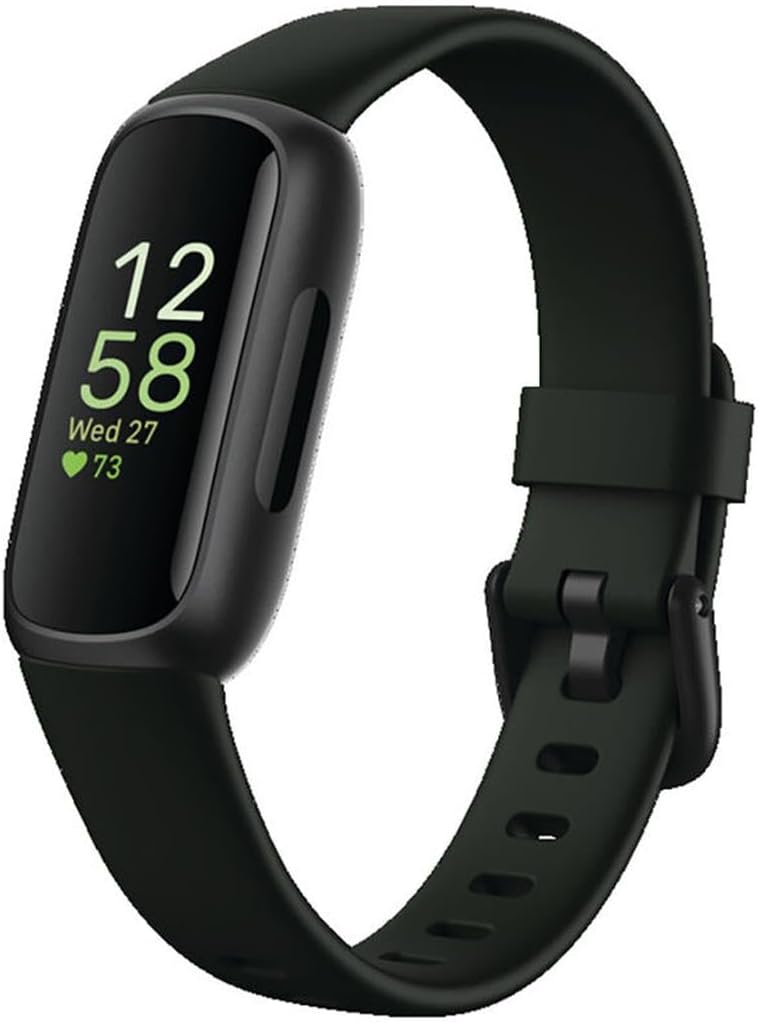
Fitbit Inspire 3 Health &-Fitness-Tracker with Stress Management, Workout Intensity, Sleep Tracking
5.FITVII FINO 2 Slim Fitness Tracker
The FITVII FINO 2 Slim Fitness Tracker is a compact and stylish wearable designed to deliver essential health and fitness insights in an affordable package. This tracker emphasizes comprehensive health monitoring, including 24/7 heart rate tracking, blood oxygen (SpO2) measurement, and blood pressure monitoring. These features provide users with valuable data to understand their cardiovascular health and overall wellness, though they are not intended for medical use. It also tracks sleep patterns, analyzing light and deep sleep stages to help improve rest quality.
The FITVII FINO 2 excels in user convenience with features like seven sports modes, step counting, calorie tracking, and menstrual cycle reminders for women. Its integration with smartphones allows for Bluetooth connectivity, call/message notifications, and music control. The companion app provides detailed analytics to help users track their progress over time. Additionally, its long battery life, sleek design, and customizable straps make it a versatile choice for daily wear.
While the tracker lacks advanced options like built-in GPS or extensive third-party app integration, its robust feature set and affordable price make it an appealing option for individuals seeking basic yet effective health monitoring and fitness tracking.
